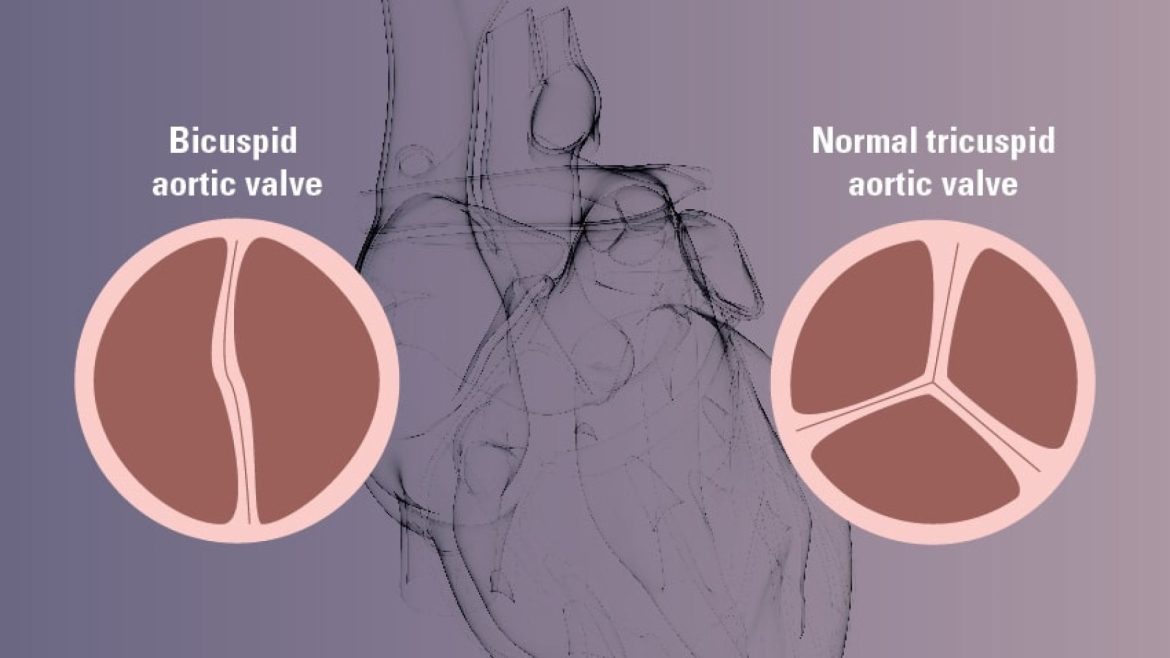Aortic valve disease, a condition affecting the valve between the heart’s left ventricle and the aorta, can lead to serious cardiovascular complications if left untreated. The aortic valve is crucial for maintaining unidirectional blood flow from the heart to the body. When it malfunctions, either by not opening fully (aortic stenosis) or not closing properly (aortic regurgitation), it can significantly impact heart function and overall health. Understanding the major causes of aortic valve disease is essential for early detection, effective treatment, and improved patient outcomes. Here, we explore the six primary causes of aortic valve disease.
6 Major Causes of Aortic Valve Disease
1. Congenital Heart Defects
Congenital heart defects are structural abnormalities present at birth.
One of the most common congenital defects affecting the aortic valve is bicuspid aortic valve (BAV), where the valve has only two leaflets instead of the normal three. This anomaly can lead to premature wear and tear, resulting in aortic stenosis or regurgitation.
SEE ALSO: Which Fruit Is Good After Angioplasty
Bicuspid Aortic Valve
Prevalence: BAV affects approximately 1-2% of the population and is more common in males.
Pathophysiology: The abnormal valve structure causes turbulent blood flow, leading to calcification and fibrosis over time.
Complications: Individuals with BAV are at higher risk for aortic aneurysm, coarctation of the aorta, and infective endocarditis.
Unicuspid and Quadricuspid Aortic Valves
Rarity: These are extremely rare congenital conditions.
Impact: Similar to BAV, these abnormalities can lead to valve dysfunction due to abnormal flow dynamics and structural integrity.
2. Age-Related Degeneration
As individuals age, the aortic valve can undergo degenerative changes.
Age-related aortic valve disease is primarily characterized by calcific aortic stenosis, where calcium deposits form on the valve leaflets, causing them to stiffen and thicken.
Calcific Aortic Stenosis
Incidence: Most common in individuals over 65 years of age.
Pathogenesis: Calcium buildup restricts valve motion, leading to increased pressure within the heart.
Symptoms: Patients may experience chest pain, shortness of breath, and fainting spells as the condition progresses.
Risk Factors
Hyperlipidemia: Elevated cholesterol levels can accelerate calcification.
Hypertension: High blood pressure contributes to valve stress and damage.
Smoking: Increases the risk of cardiovascular diseases, including aortic valve disease.
3. Rheumatic Fever
Rheumatic fever, a complication of untreated streptococcal throat infections, can lead to rheumatic heart disease. This condition often affects the aortic valve, causing scarring and deformity.
Mechanism
Autoimmune Reaction: The body’s immune response to the streptococcal bacteria mistakenly targets heart tissues, including the aortic valve.
Scarring and Fusion: Repeated inflammation causes the valve leaflets to scar and potentially fuse, resulting in stenosis or regurgitation.
Epidemiology
Geographical Prevalence: More common in developing countries where streptococcal infections are less effectively treated.
Age Group: Typically affects children and young adults.
4. Endocarditis
Endocarditis is an infection of the inner lining of the heart chambers and valves. It can cause significant damage to the aortic valve, leading to severe regurgitation or stenosis.
Infective Endocarditis
Causative Agents: Bacteria (such as Staphylococcus aureus and Streptococcus viridans) are the most common culprits.
Valve Damage: The infection can cause vegetation (clusters of bacteria and cellular debris) on the valve, leading to destruction of the valve tissue.
Risk Factors: Intravenous drug use, dental procedures, and existing heart conditions increase the risk of endocarditis.
Symptoms and Diagnosis
Symptoms: Fever, chills, fatigue, and signs of heart failure.
Diagnosis: Blood cultures and echocardiography are essential for identifying the infection and assessing valve damage.
5. Marfan Syndrome and Other Connective Tissue Disorders
Marfan syndrome, along with other connective tissue disorders like Ehlers-Danlos syndrome, can predispose individuals to aortic valve disease due to the inherent weakness of connective tissues.
Marfan Syndrome
Genetics: An autosomal dominant disorder caused by mutations in the FBN1 gene, affecting the production of fibrillin-1.
Cardiovascular Manifestations: Includes aortic root dilation, which can lead to aortic regurgitation and predispose to aortic dissection.
Symptoms: Patients may exhibit tall stature, long limbs, and hyperflexible joints.
Management
Monitoring: Regular echocardiograms to monitor aortic root size and valve function.
Medications: Beta-blockers and angiotensin receptor blockers (ARBs) to reduce stress on the aorta.
6. Radiation Therapy
Radiation therapy, particularly for cancers in the chest area such as Hodgkin’s lymphoma, can lead to late-onset aortic valve disease. Radiation-induced heart disease (RIHD) is a serious complication that may manifest years after treatment.
Mechanism
Radiation Damage: Radiation can cause fibrosis and calcification of the valve tissue, leading to stenosis.
Timeframe: Symptoms may not appear until 10-20 years after radiation exposure.
Risk Factors
Dose and Field: Higher radiation doses and larger treatment fields increase the risk of RIHD.
Concurrent Chemotherapy: Certain chemotherapeutic agents can exacerbate radiation damage.
Clinical Presentation
Symptoms: Similar to other forms of aortic valve disease, including shortness of breath, chest pain, and fatigue.
Diagnosis and Management: Requires a high index of suspicion in patients with a history of chest radiation, with echocardiography and cardiac MRI being key diagnostic tools.
Conclusion
Aortic valve disease can result from a variety of causes, ranging from congenital defects and age-related degeneration to infectious and systemic conditions. Early detection and intervention are crucial for managing the disease and preventing complications. Advances in imaging, surgical techniques, and medical therapies have significantly improved the prognosis for individuals with aortic valve disease. Regular monitoring and appropriate treatment can help maintain heart function and enhance the quality of life for affected patients. Understanding the major causes of aortic valve disease is essential for healthcare providers to develop effective prevention and management strategies tailored to individual patient needs.


